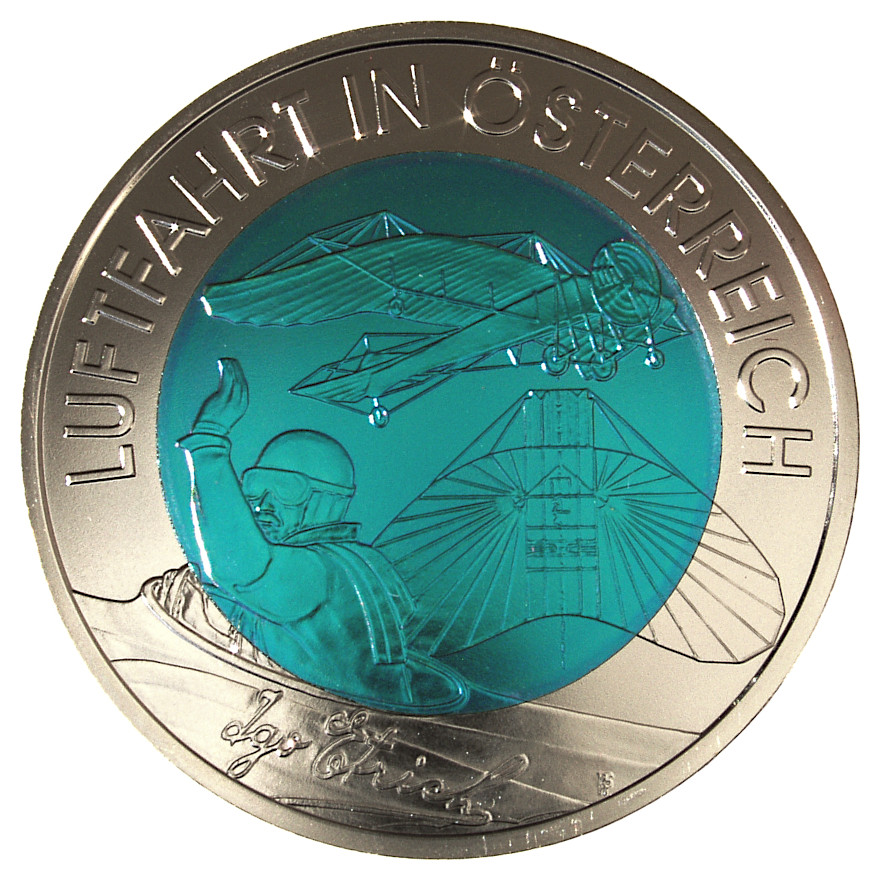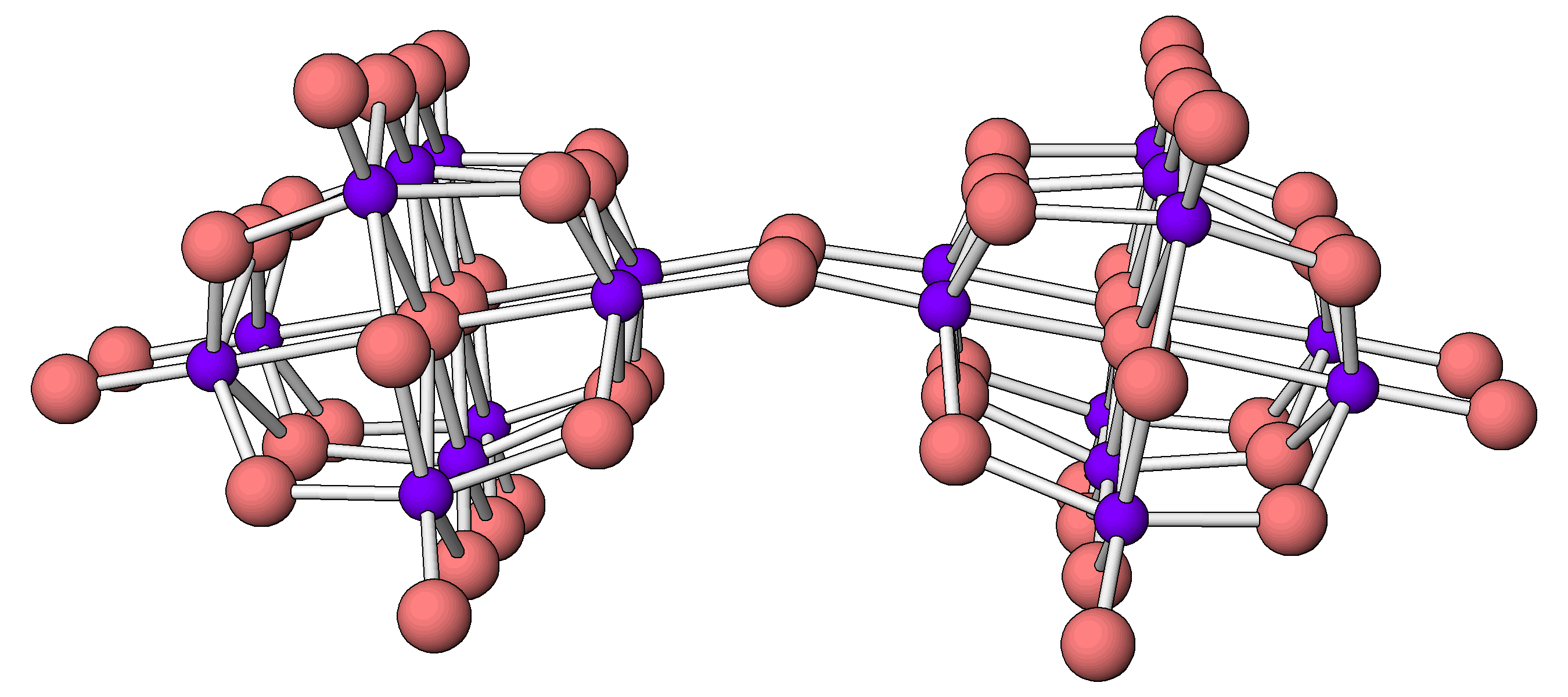Niobium
Niobium:

An Austrian 25 Euro silver niobium coin. The central coloured part is made of pure Niobium.
Facts about Niobium:
- Niobium: Gray, ductile metal of high melting point (2468°C) and very resistant to acids.
- Fun fact about Niobium: Niobium alloys are used as superconducting wires and there would be no MRI images without them.
- Chemical symbol: Nb
- Atomic number: 41
A crystal structure containing Niobium:

Structure of the icosaniobate anion. Niobium atoms are colored purple.
Facts about this structure:
- Formula: 8(C16 H36 N +),Nb20 O54 8-,3(C4 H8 O2)
- Structure name: octakis(Tetra-n-butylammonium) icosaniobate ethyl acetate solvate
- Fun fact about the structure: Although niobium itself is a very unreactive metal, this anionic molecular oxide has rich solution chemistry.
- CSD refcode: QETJIJ (What’s this?)
- Associated publication: M.Maekawa, Y.Ozawa, A.Yagasaki, Inorganic Chemistry, 2006, 45, 9608, DOI: 10.1021/ic0601788
More about Niobium:
Niobium is chemically very similar to tantalum and it is very difficult to separate them, hence the name niobium. The element was named after Niobe, daughter of Tantalus, of Greek mythology. Tantalum was named, of course, after Tantalus. Niobium is a very unreactive metal and insoluble in acids, even in aqua regia. Some people who prefer metals harder than gold or platinum but are allergic to nickel, etc., choose niobium rings for their wedding rings. Although the metal and oxides have virtually no solution chemistry, tetrabutylammonium salts of polyniobates are very soluble in water and polar organic solvents.
Learn More About the International Year of the Periodic Table (IYPT) in Crystals Project:
This project (#IYPTCrystals) is part of the International Year of the Periodic Table celebration (#IYPT2019), read more about the project here.
You can follow us on social media; search for #IYPTCrystals or follow The CCDC on X @ccdc_cambridge on Facebook ccdc.cambridge, on Instagram ccdc_cambridge or on YouTube CCDCCambridge.
Understand some of the terms and concepts used with our Frequently Asked Questions page here.
A 3D visualization showing Niobium in real crystal structures: